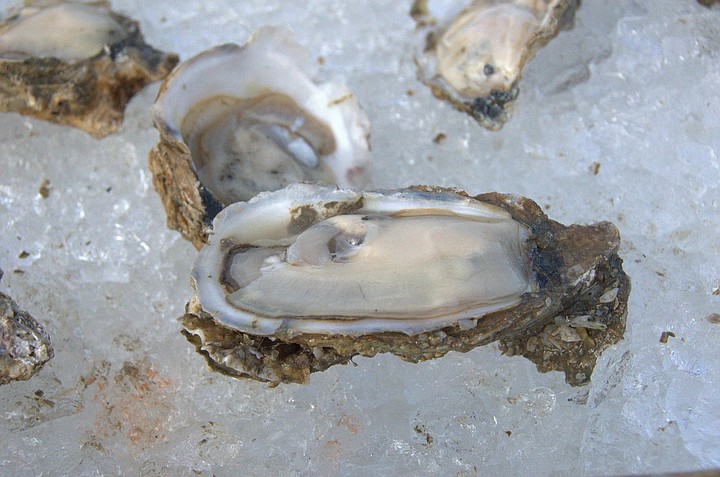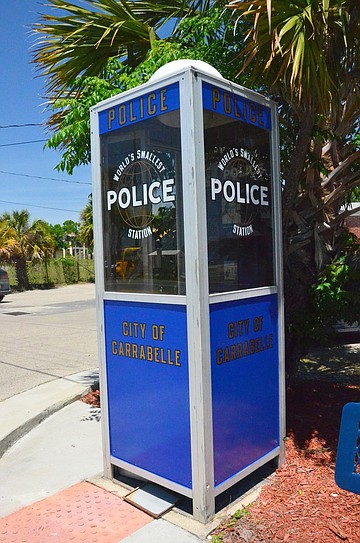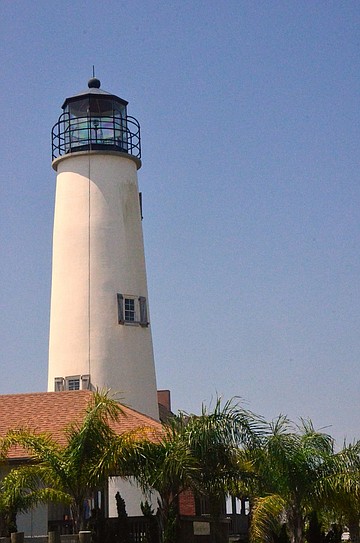 Facebook
Facebook
 X
X
 Instagram
Instagram
 TikTok
TikTok
 Youtube
Youtube

There’s a place in Florida where wildlife abounds, where you can snorkel, scuba dive, bird watch, canoe, kayak and hike in relative isolation in Mother Nature’s sanctuary. This same place is a haven for seafood: oysters, shrimp, clams, scallops, and a variety of fish like snapper, amberjack, tarpon and sheepshead.

No surprise it’s where watermen make a living – though that might be changing. This is wild Franklin County in Florida’s panhandle, a place that has yet to succumb to high rises and high density living, with few stop lights and little traffic.
Where the wild things are
As a place-setter, Franklin County is located along the Gulf of Mexico in the Florida panhandle, south of the Alabama border and southwest of Tallahassee. It’s sometimes dubbed the “Forgotten Coast” because of its uncrowded beaches and miles of relative solitude; this might be partially due to the fact that 87% of Franklin County is either state- or federally protected parkland or nature preserve.
Because of this, Apalachicola Bay in Franklin County continues to be an extremely productive estuary. And it is home to boundless wildlife and pristine reserves. Some of my favorite wild places in Franklin County are:
Apalachicola National Estuarine Research Reserve. This crown jewel is considered a “biological hotspot” owing to its over 1,300 species of plants, 131 species of fish and 50 species of mammals within 246,000 acres in Apalachicola Bay. This makes it the second-largest estuarine research reserve system in the United States. Signs are posted to beware of black bears, though I didn’t see one. Come here to find manatees in their natural habitat.

Alligator Point. Situated at the easternmost end of Franklin County between the Gulf of Mexico and Alligator Harbor, this place is perfect for birding and wildlife. It’s also known for its clam harvesting and fishing. You can’t help but feel like you have the whole place to yourself, as its remoteness almost guarantees solitude.
Bald Point State Park. Located at the junction of the Apalachee and Ochlockonee Bays, this secluded 5,000-acre park is considered the best spot for sighting black bears. It’s also a favorite with birders, since it is a bi-annual stopover for migrating birds and butterflies.
Tate’s Hell State Forest. With such an evocative name and 131,256 acres of diverse natural communities, Tate’s Hell is a great place for hiking and discovering hydric communities such as wet prairie, wet flatwoods, strand swamp, bottomland forest, baygall and floodplain swamp. The High Bluff Coastal Trail hits the hot spots and the Deep Creek Birding Trail…well, it’s known for the birds. It’s also home to 150-year-old cypress trees. And for those whose life lists include spotting threatened or endangered species, this is a place with bald eagle, Florida black bear, gopher tortoise and red-cockaded woodpecker sightings.
Town and country
A diamond in the rough, Franklin County still has the charm of “Old Florida,” with scenic countryside drives, family-owned shops, great culinary traditions and a huge dose of Southern hospitality to charm any visitor.

Within the county’s 545 square miles, there are several quaint towns that offer respite and variety: Apalachicola, Carrabelle, and St. George Island. Each offers a variety of accommodations that range from camping, beach cottages and historic B&Bs to waterfront hotels and luxurious beachfront rental properties.
During my stay on St. George Island, I stayed at a fully furnished, 4-bedroom beach house with a private swimming pool, spa and three decks of living space. Called SGI Plantation, it’s managed by Collins Vacation Rentals.
Apalachicola. This is a seat of seafood – a fishing town where oysters, timber and fishing are part of the history and culture. Some say that the town exudes more Cape Cod than Deep South charm, likely because Apalachicola has attracted so many Northerners who take up residence.
Besides offering a wonderful array of local restaurants that specialize in seafood, the town is where the Apalachicola Maritime Museum is located. Founded to “celebrate and preserve the rich maritime history of Apalachicola in a hands-on learning environment with active sailing and adventure programs, boat building and restoration, and educational programs,” the museum is your place to sign up for eco-tours, sailing trips, kayak trips, sunset cruises and specialized trips to barrier islands.
The most popular is the three-hour estuary cruise that explores the Apalachicola River and estuary while showcasing the immense diversity within.
Carrabelle. Only a 25-minute drive east of Apalachicola is the historic community of Carrabelle. Located at the mouth of the Carrabelle River on the Gulf of Mexico, it offers full-service marinas and is the place to charter a captain and boat to find the best fishing spots. Of note is that the Carrabelle River is the only spot in the county that offers deepwater port access to the Intercoastal Waterway.

One of those quirky claims: Carrabelle is home to the smallest police station in the world, a phone booth on the corner of US 98 and CR 67. Featured on many late night shows, you really have to see it to believe it.
St. George Island. While St. George Island is the place to go for miles of pristine beaches as well as beach cottage and home rentals, it is also home to Cape St. George Light (left). Besides the opportunity to ascend 92 stairs to the top of the lighthouse, there’s a worthwhile museum on its history and tragic collapse in 2005.
Whether seeking wildlife, waterways, or small town charm, I found it all in Franklin County. To say the least, it was wildly wonderful.


There’s a place in Florida where wildlife abounds, where you can snorkel, scuba dive, bird watch, canoe, kayak and hike in relative isolation in Mother Nature’s sanctuary. This same place is a haven for seafood: oysters, shrimp, clams, scallops, and a variety of fish like snapper, amberjack, tarpon and sheepshead.

No surprise it’s where watermen make a living – though that might be changing. This is wild Franklin County in Florida’s panhandle, a place that has yet to succumb to high rises and high density living, with few stop lights and little traffic.
Where the wild things are
As a place-setter, Franklin County is located along the Gulf of Mexico in the Florida panhandle, south of the Alabama border and southwest of Tallahassee. It’s sometimes dubbed the “Forgotten Coast” because of its uncrowded beaches and miles of relative solitude; this might be partially due to the fact that 87% of Franklin County is either state- or federally protected parkland or nature preserve.
Because of this, Apalachicola Bay in Franklin County continues to be an extremely productive estuary. And it is home to boundless wildlife and pristine reserves. Some of my favorite wild places in Franklin County are:
Apalachicola National Estuarine Research Reserve. This crown jewel is considered a “biological hotspot” owing to its over 1,300 species of plants, 131 species of fish and 50 species of mammals within 246,000 acres in Apalachicola Bay. This makes it the second-largest estuarine research reserve system in the United States. Signs are posted to beware of black bears, though I didn’t see one. Come here to find manatees in their natural habitat.

Alligator Point. Situated at the easternmost end of Franklin County between the Gulf of Mexico and Alligator Harbor, this place is perfect for birding and wildlife. It’s also known for its clam harvesting and fishing. You can’t help but feel like you have the whole place to yourself, as its remoteness almost guarantees solitude.
Bald Point State Park. Located at the junction of the Apalachee and Ochlockonee Bays, this secluded 5,000-acre park is considered the best spot for sighting black bears. It’s also a favorite with birders, since it is a bi-annual stopover for migrating birds and butterflies.
Tate’s Hell State Forest. With such an evocative name and 131,256 acres of diverse natural communities, Tate’s Hell is a great place for hiking and discovering hydric communities such as wet prairie, wet flatwoods, strand swamp, bottomland forest, baygall and floodplain swamp. The High Bluff Coastal Trail hits the hot spots and the Deep Creek Birding Trail…well, it’s known for the birds. It’s also home to 150-year-old cypress trees. And for those whose life lists include spotting threatened or endangered species, this is a place with bald eagle, Florida black bear, gopher tortoise and red-cockaded woodpecker sightings.
Town and country
A diamond in the rough, Franklin County still has the charm of “Old Florida,” with scenic countryside drives, family-owned shops, great culinary traditions and a huge dose of Southern hospitality to charm any visitor.

Within the county’s 545 square miles, there are several quaint towns that offer respite and variety: Apalachicola, Carrabelle, and St. George Island. Each offers a variety of accommodations that range from camping, beach cottages and historic B&Bs to waterfront hotels and luxurious beachfront rental properties.
During my stay on St. George Island, I stayed at a fully furnished, 4-bedroom beach house with a private swimming pool, spa and three decks of living space. Called SGI Plantation, it’s managed by Collins Vacation Rentals.
Apalachicola. This is a seat of seafood – a fishing town where oysters, timber and fishing are part of the history and culture. Some say that the town exudes more Cape Cod than Deep South charm, likely because Apalachicola has attracted so many Northerners who take up residence.
Besides offering a wonderful array of local restaurants that specialize in seafood, the town is where the Apalachicola Maritime Museum is located. Founded to “celebrate and preserve the rich maritime history of Apalachicola in a hands-on learning environment with active sailing and adventure programs, boat building and restoration, and educational programs,” the museum is your place to sign up for eco-tours, sailing trips, kayak trips, sunset cruises and specialized trips to barrier islands.
The most popular is the three-hour estuary cruise that explores the Apalachicola River and estuary while showcasing the immense diversity within.
Carrabelle. Only a 25-minute drive east of Apalachicola is the historic community of Carrabelle. Located at the mouth of the Carrabelle River on the Gulf of Mexico, it offers full-service marinas and is the place to charter a captain and boat to find the best fishing spots. Of note is that the Carrabelle River is the only spot in the county that offers deepwater port access to the Intercoastal Waterway.

One of those quirky claims: Carrabelle is home to the smallest police station in the world, a phone booth on the corner of US 98 and CR 67. Featured on many late night shows, you really have to see it to believe it.
St. George Island. While St. George Island is the place to go for miles of pristine beaches as well as beach cottage and home rentals, it is also home to Cape St. George Light (left). Besides the opportunity to ascend 92 stairs to the top of the lighthouse, there’s a worthwhile museum on its history and tragic collapse in 2005.
Whether seeking wildlife, waterways, or small town charm, I found it all in Franklin County. To say the least, it was wildly wonderful.
Comments